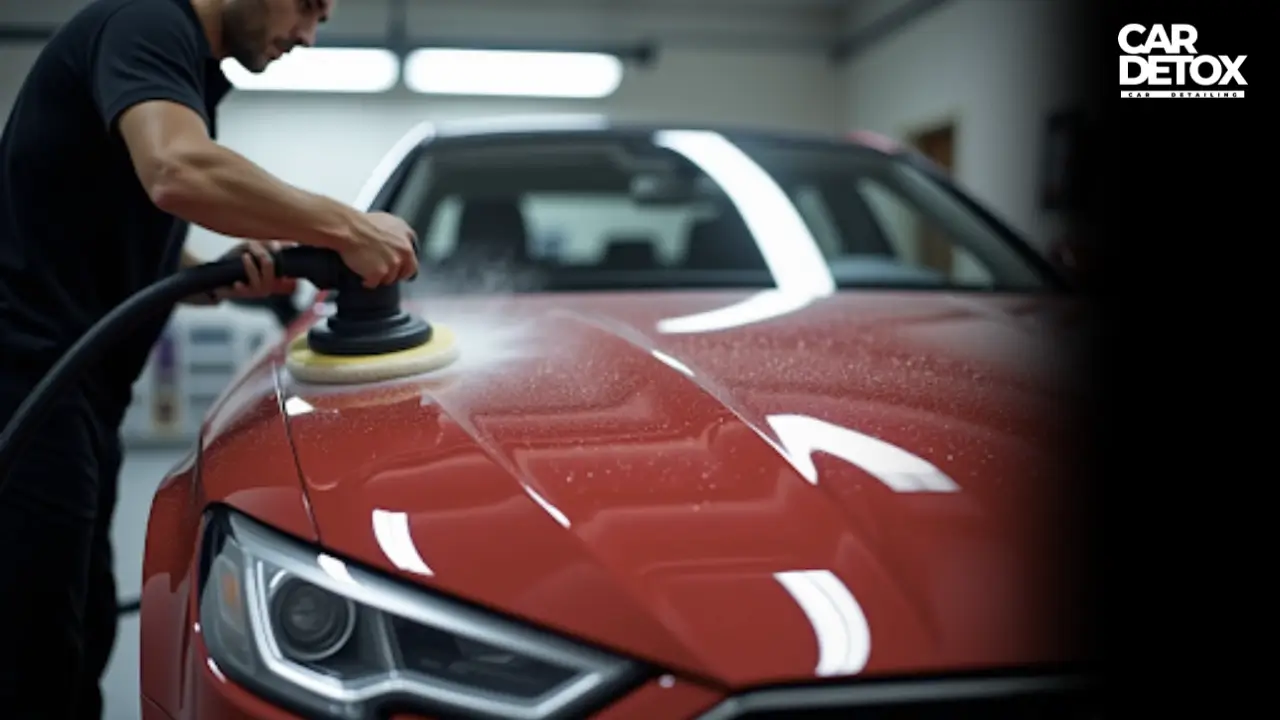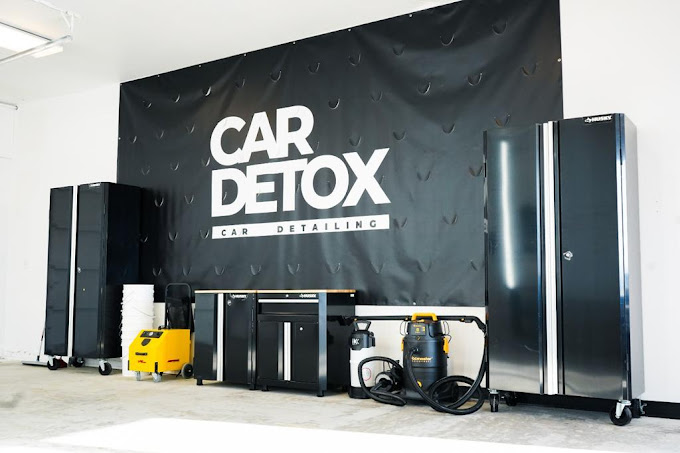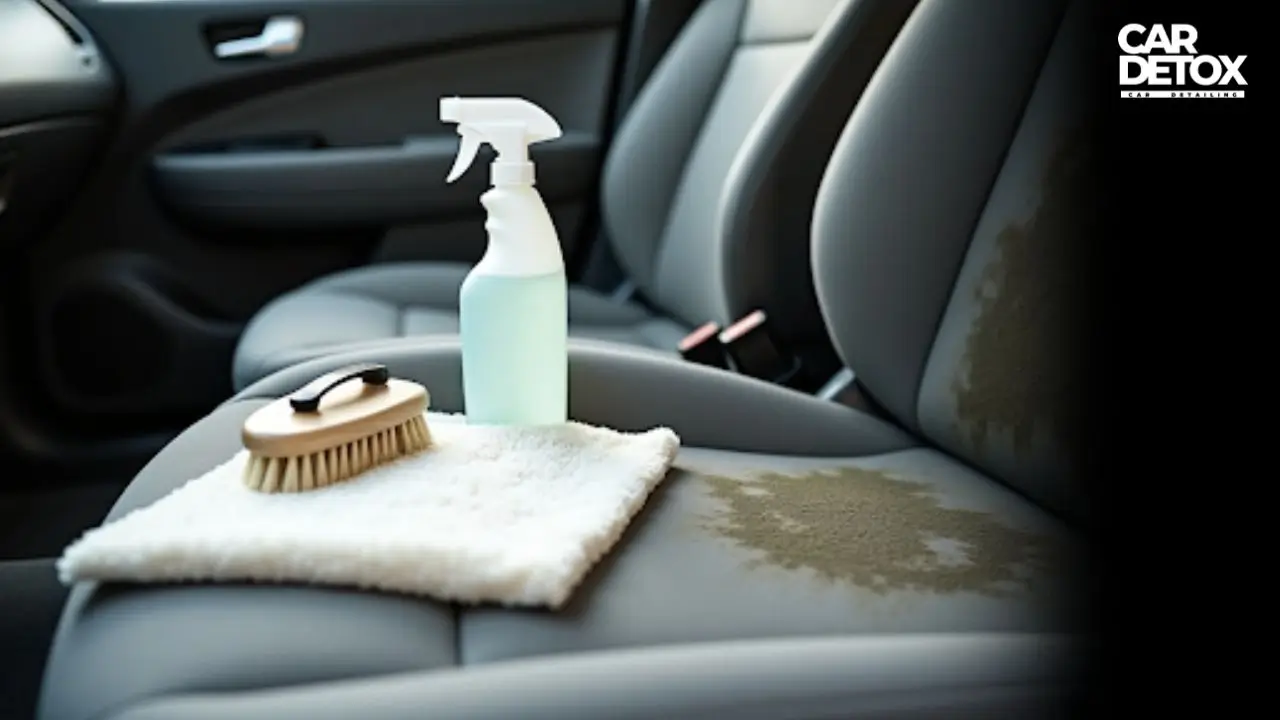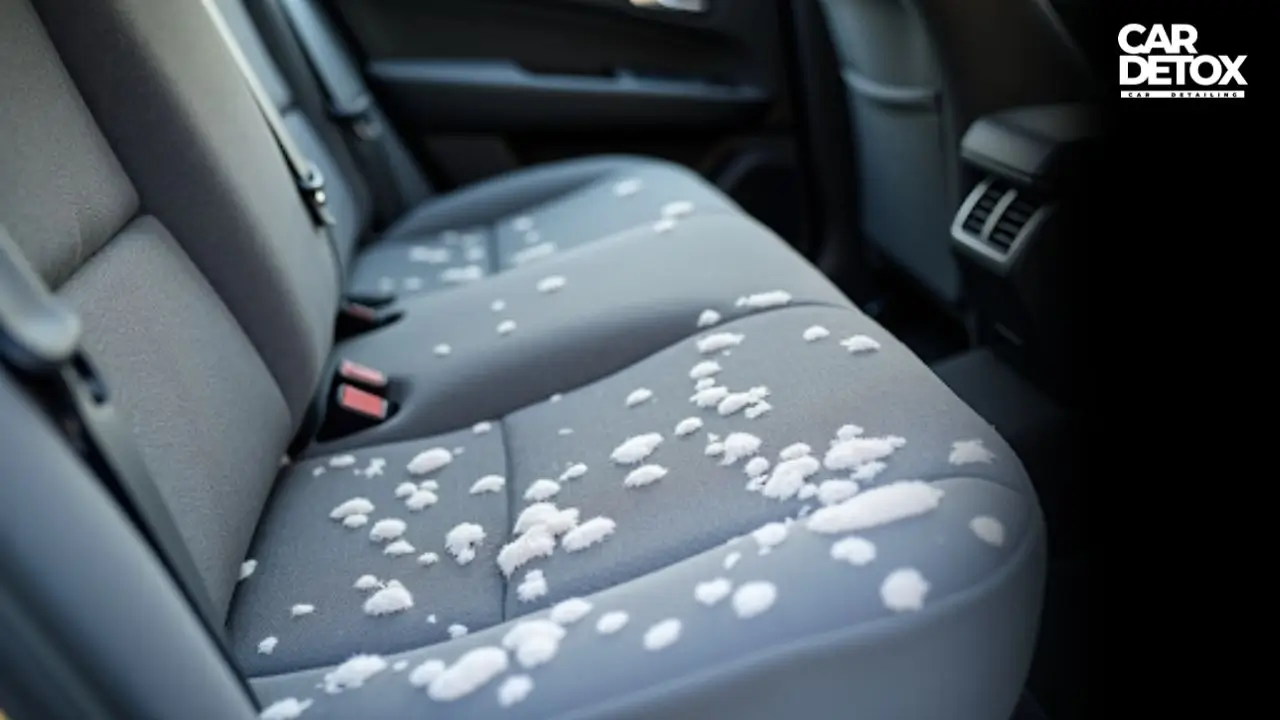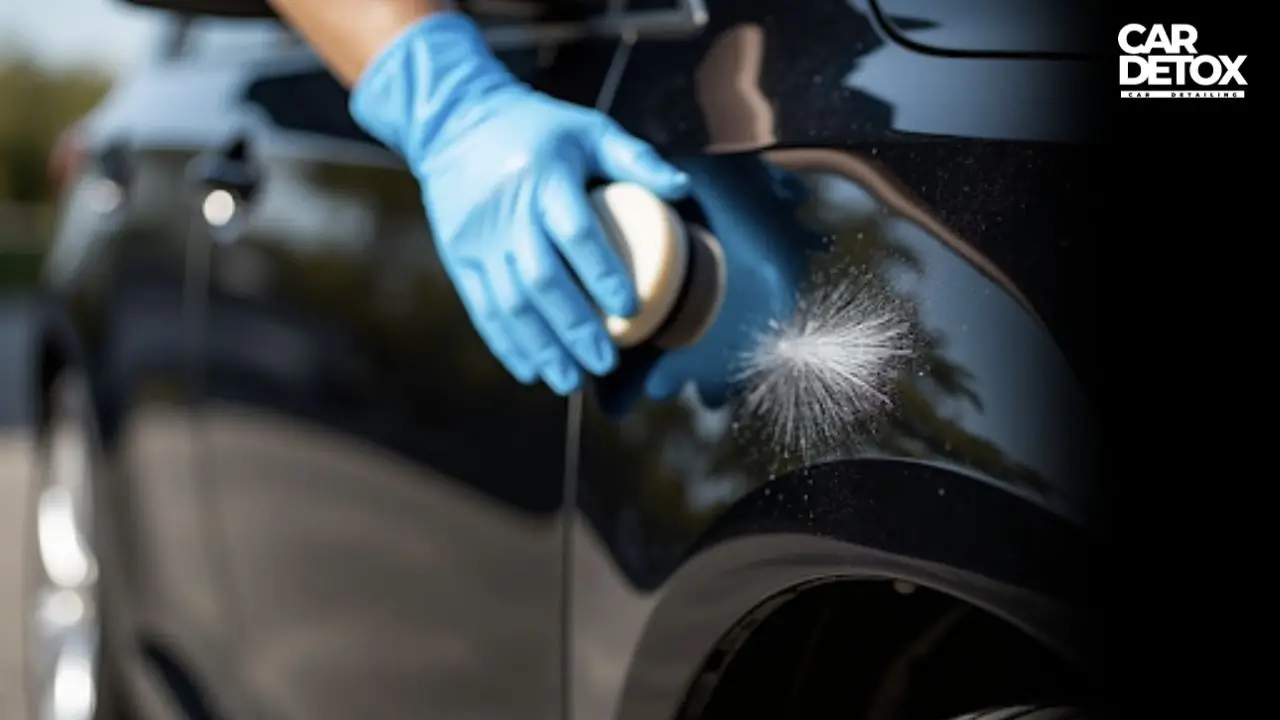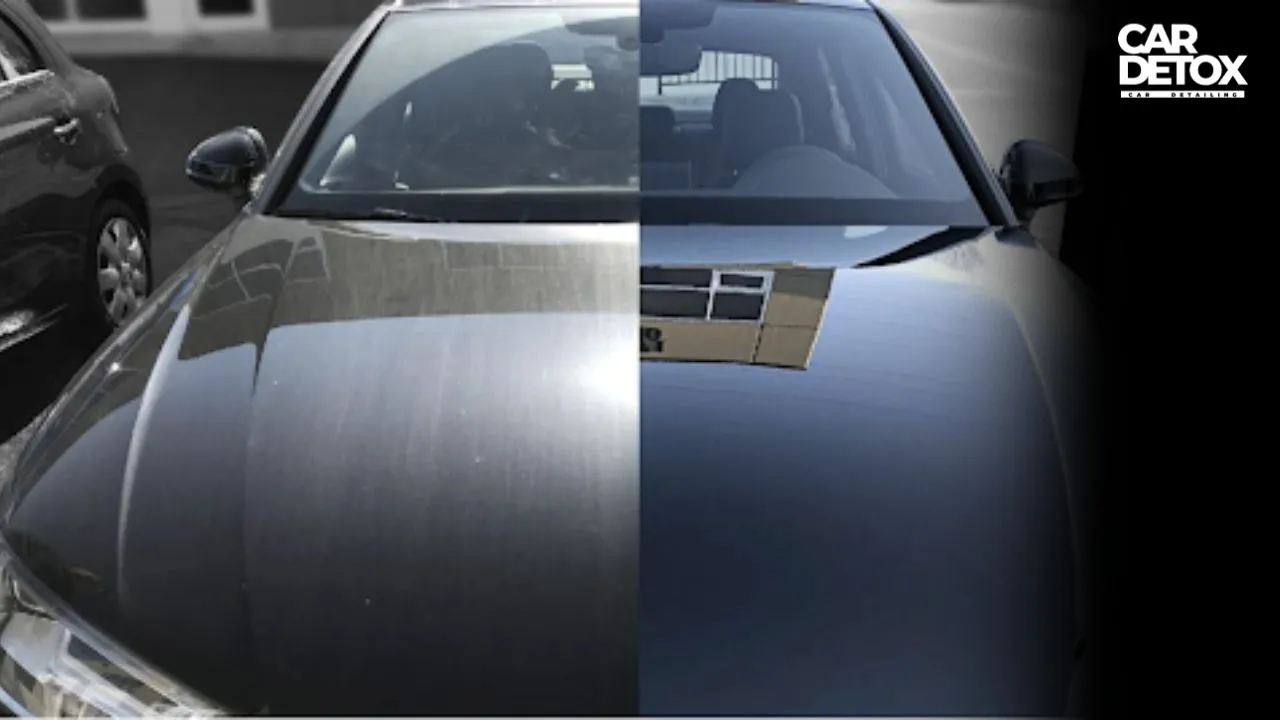Here's a surprising fact - your car's protective clear coat gets thinner every time you polish your car.
The numbers tell a concerning story. Car manufacturers apply only 30 to 50 microns of clear coat to your vehicle. This protective layer is thinner than a sticky note and about half the thickness of a human's hair. Each polishing session strips away 2 to 5 microns or more, based on your technique.
Your car needs regular polishing to maintain its showroom shine, but this creates a tricky situation. The right polishing frequency becomes crucial to avoid damage. The safe number of polishes depends on your car's clear coat thickness. Modern vehicles rely heavily on clear coat protection - 99% have this protective layer. The thickness varies across different parts of your car - some spots might have just 10 microns while others could have up to 50. Not sure when your car needs polishing? Let Car Detox bring back that deep gloss with expert care—book your polish today!
This piece explains the best polishing schedule for your vehicle. You'll learn what affects polish longevity and how to spot genuine polishing needs. Our goal? To keep your car's finish protected and shiny without causing damage.
What Is Car Polishing and Why Does It Matter
Car polishing does more than just make your vehicle shine—it's a technical process that affects your paint's longevity. You need to understand what happens beneath the surface to determine how often you should polish your car without causing damage.
Understanding the paint layer structure
Modern automotive paint has five distinct layers that work together as a protective system. The structure typically has:
- Phosphate treatment (5 microns) - Provides corrosion resistance for metal
- E-coat (20 microns) - Works with phosphate to protect against corrosion
- Primer (20-30 microns) - Creates a smooth surface for the color
- Base/color coat (15-25 microns) - Gives the vehicle its actual color
- Clear coat (40-50 microns) - Protects all underlying layers
The clear coat shields against UV rays and environmental damage. It also adds gloss to your vehicle's appearance.
What polishing actually removes
In stark comparison to this common belief, polishing doesn't just add something to your car's surface—it's a controlled removal process. Your car's surface gets leveled out as polishing compounds physically remove a microscopic layer of clear coat to fix imperfections.
Each polishing session removes about 2-5 microns of clear coat, based on the polishing method and product abrasiveness. This process eliminates:
- Minor scratches and swirl marks
- Oxidation and water spots
- Surface contamination
The top layer of clear coat contains UV inhibitors that protect your car's paint from sun damage. The paint becomes more vulnerable to fading and deterioration as this layer gets thinner.
How many times can you polish a car safely?
Detailing professionals agree: Polish your car as infrequently as possible. You have limited material to work with over your vehicle's lifespan since manufacturers typically apply only 30-50 microns of clear coat.
Most experts suggest polishing just 1-2 times per year. You should only polish when:
- Visual defects like scratches and swirls are noticeable
- The paint appears dull or oxidized
- A paint depth gauge confirms sufficient clear coat remains
Note that polishing cannot be reversed—once the clear coat is removed, you'll need to repaint to restore it. You should only polish when necessary and use protective products afterward to minimize future damage.
Factors That Affect How Often You Can Polish
Your car's safe polishing frequency depends on several important factors. Understanding these elements will help you avoid damaging the clear coat and protect your car's finish for years.
Clear coat thickness and type
Car manufacturers use different quality finishes. Clear coat thickness varies substantially between makers, and most factory applications range between 30-50 microns. This protective layer is quite thin—about half as thick as a human hair.
Your clear coat's hardness plays a role in how often you can polish. Ceramic clear coats are harder and more scratch-resistant, so you won't need to polish them as often. Softer, clear coats might need more care but require gentler polishing to maintain their thickness.
Paint thickness gauges can help you track the remaining material. You should remove no more than 25% of the total clear coat thickness to keep UV protection intact. These protective blockers tend to concentrate in the top quarter of the clear coat.
Pad, polish, and machine variables
Your choice of tools and products has a big effect on clear coat removal during polishing. Microfiber and wool pads are very aggressive and remove material quickly. Softer foam pads offer gentler correction.
A pad's density affects its aggressiveness—denser, stiffer pads cut more than softer ones. The pads become less dense as they heat up and get saturated with product, which reduces their cutting power.
The type of machine you use matters. Rotary buffers create more heat and friction, so they might remove more clear coat than dual-action polishers.
Environmental and usage conditions
Cars that face harsh sunlight, heavy rain, snow, or road salt will deteriorate faster. Cars in urban areas with high pollution levels often need more frequent care.
The way you drive affects your polishing needs. Daily drivers collect surface contaminants faster than garaged weekend vehicles. If you drive off-road or often travel on gravel roads, you risk more paint damage and might need more correction.
Most daily drivers only need polishing once or twice a year to keep looking good, despite all these factors. Regular polishing keeps your car’s paint looking brand new. Trust Car Detox to know exactly when and how your ride needs it
How to Decide If Your Car Needs Polishing
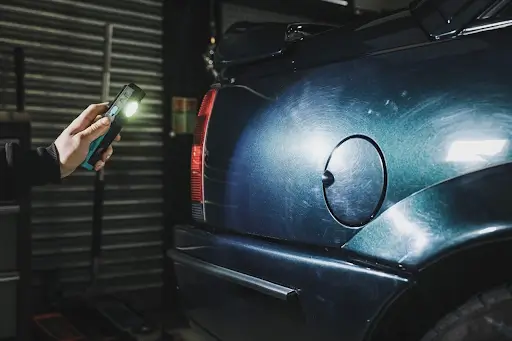
A simple visual inspection can help you decide if your car needs polishing, which saves your vehicle's clear coat and time. Unlike regular maintenance, you should only polish your car when it's absolutely needed.
Visual signs that indicate polishing is needed
Your car's appearance gives you clear signals when it's time to polish. Here's what to look for:
- Swirl marks that look like spider web patterns in direct sunlight
- A finish that stays dull or faded even after washing
- Surface that feels rough after you wash it
- Stubborn water spots or bird-dropping stains
- Visible holograms or buffer trails from previous poor polishing jobs
These signs suggest your car needs more than a basic wash. But if your fingernail catches on a scratch, polishing alone might not fix the problem.
When a wax or sealant is enough
Some minor imperfections don't need paint removal. A simple wax job will do if:
The car shows no visible damage or surface problems. You see shallow scratches (your fingernail slides over them). The paint looks clean, but it needs protection.
Waxes and sealants just temporarily mask minor imperfections instead of fixing them. These issues will show up again once the product wears off.
Using a paint depth gauge for safety
Paint thickness gauges are a vital tool that provides key information about the remaining clear coat. These devices help you:
Get precise measurements of your car's paint thickness. Set a starting point before any correction work. Keep enough material intact (factory paint typically ranges from 4-7 mils or 100-180 microns). Spot areas that were repainted and need special care
Expert detailers suggest removing no more than 0.3 mils (8 microns) of clear coat during polishing to maintain UV protection.
Best Practices to Minimize Polishing Frequency
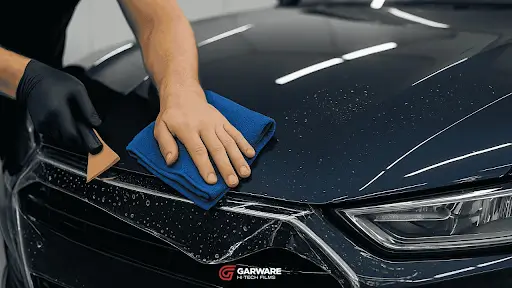
Your car's paint needs less polishing when you take the right protective steps. These strategies shield your paint from damage instead of fixing problems after they occur.
Protective coatings to extend shine
A protective layer becomes essential after polishing your car. It keeps the clarity locked in and shields your clear coat from damage. Here's how long different products last:
- Wax: 1-3 months of protection
- Sealant: 4-6 months of protection
- Ceramic spray: 6-12 months of protection
- Ceramic coating: 2-5 years of protection
These products create a protective barrier that takes the hit instead of your paint. Ceramic coatings stand out as the best defense against UV rays, oxidation, and environmental contaminants. Maintain that just-detailed look year-round—schedule your professional car polish with Car Detox for long-lasting shine.
Gentle washing and drying methods
Paint defects show up 90% of the time because of poor washing and drying techniques. Your finish stays pristine when you:
Use car-specific pH-neutral soap and skip household detergents. The two-bucket method works best - one bucket holds soapy water while another rinses your mitt. Premium microfiber towels dry your car safely without scratching the surface.
Drying aids add extra protection and make the process smoother by reducing friction.
Routine maintenance to avoid defects
Quick maintenance between polishes keeps your finish looking great. Regular checks catch small problems early. Quick detailer sprays remove dust and fingerprints between washes.
Ceramic-coated cars need proper washing once or twice every week. This complete approach means you won't need to polish your car as often.
Conclusion
Your car's appearance needs polishing, but you must balance looks with protection. Each polish takes off 2-5 microns of your car's limited 30-50 micron clear coat. Smart polishing beats frequent polishing to preserve your paint longer.
Polish your car only when needed - once or twice a year at most. Watch for signs like swirl marks, dull spots, or rough texture after washing. A paint depth gauge will tell you if polishing is safe.
Protection between polishes will keep your paint looking new by a lot. Add ceramic coatings, sealants, or regular wax to shield against environmental damage. Studies show that 90% of paint problems come from wrong cleaning methods, so proper washing is vital.
Next time you think about polishing your car, ask yourself: Does it really need correction? Would a gentler treatment be enough? You can't replace the clear coat without a full repaint. Careful treatment will give your car that showroom shine for years. Keep your car's protective layers intact while it looks great - don't polish until there's nothing left to protect. Protect your car’s shine and restore its brilliance with Car Detox—book your detailing service today!
Our Popular Services
Car Detailing Services | Ceramic Coating Services | Pet Hair Removal Services | Mobile Auto Detail Services Happy Valley | Car Detailing Services in Tualatin
Find Us On Map
Car Detox - Auto Detailing Services
Book An Appointment
Revive your ride anytime, anywhere
Schedule AppointmentQuestions? Call us now!

